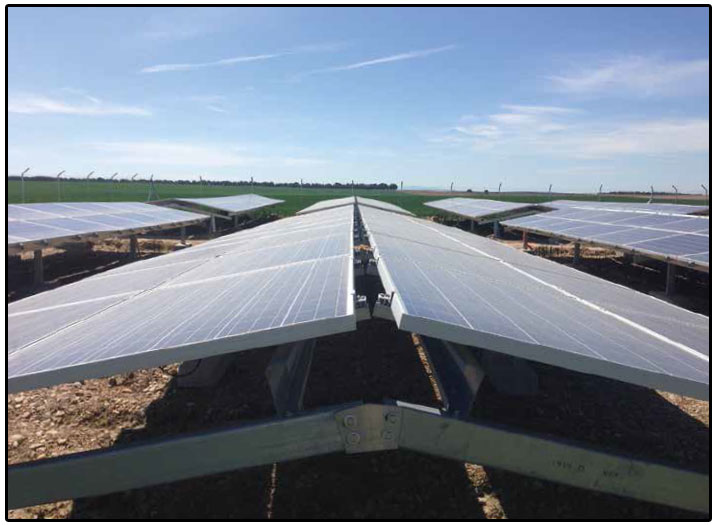- Plot No.7, Gat No. 627/1/1B, Kurali,
- Tal Khed, Chakan, Pune - 410501
- Send your mail at
- info@alligatorsolar.com
- Mobile :
- +91 9028641818

Income Tax Benefits For Corporate
Accelerated Depreciation Benefit – A major incentive for solar power
Due to a proposed cap on the rate of depreciation in the budget 2016-17, the benefit that was available to the solar project investor till date will now be halved in the first year and spread over the subsequent years.
- Solar power is largely associated with
two primary incentives:
- Savings associated with the cost of solarpower vs. grid electricity .
- Tax relief due to availing higher rate of depreciation more often termed as accelerateddepreciation, under section 32 of Income Tax act.
From these two benefits, the accelerated depreciation accounts for major relief in the upfront cost of solar by providing a tax break in the first year of operation. Ideally, there isn’t such term as accelerated depreciation. It is only a method of depreciation used for accounting or income tax purposes that enable greater deductions in the early life of the asset. By increasing the deductions taken during the first few years, one can lower the overall tax burden. The normal depreciation rate for plant and machinery is 15%. As per section-32 of Income Tax Act 1961, schedule entry 8(xiii), the Government of India (GoI) had till date allowed to claim maximum up to 80% deenergetica.

Solar Power
| Year 1 | Year 2 | Year 3 | Year 4 | Year 5 | Year 6 | Year 7 | Year 8 |
|---|---|---|---|---|---|---|---|
| At present rate of depreciation, till 31st March 2017 | |||||||
| Scenario 1 | |||||||
| In this case, the investor can claim 100% depreciation, in F.Y. 2016-17. | |||||||
| Tax benefit | 40.79 | - | - | - | - | - | - |
| Payback period | 4 years 1 month | ||||||
| Internal rate of return | 25.2% | ||||||
| Scenario 2 | |||||||
| In this case, the investor can claim depreciation for half year of operation in F.Y. 2016-17. Thereafter, he can claim tax benefit at a depreciation rate of 80% on the remaining cost of the asset in the subsequent years. | |||||||
| Tax benefit 20.39 | 16.32 | 3.26 | 0.65 | 0.13 | 0.03 | 0.01 | - |
| Payback period | 4 years 1 month | ||||||
| Internal rate of return | 24.4% | ||||||
| At proposed rate of depreciation, w.e.f 1st April 2017 | |||||||
| Scenario 3 | |||||||
| In this case, the investor can claim 60% i.e (40+20)% depreciation benefit in F.Y. 2017-18. Thereafter, he can claim tax benefit at a depreciation rate of 40% on the remaining cost of the asset in the subsequent years | |||||||
| Tax benefit 24.47 | 6.53 | 3.92 | 2.35 | 1.41 | 0.85 | 0.51 | 0.31 |
| Payback period | 4 years 3 month | ||||||
| Internal rate of return | 24.2% | ||||||
| Scenario 4 | |||||||
| In this case, the investor can claim 60% i.e (40+20)% depreciation benefit in F.Y. 2017-18. Thereafter, he can claim tax benefit at a depreciation rate of 40% on the remaining cost of the asset in the subsequent years. | |||||||
| Tax benefit 12.24 | 11.42 | 6.85 | 4.11 | 2.47 | 1.48 | 0.89 | 0.53 |
| Payback period | 4 years 4 month | ||||||
| Internal rate of return | 23.4% | ||||||
preciation in year one of commissioning of solar power plant. Also as per Section 32 (1) (ii A)of Income Tax Act 1961, an additional depreciation of 20% (max.) of actual cost can be claimed if new plant and machinery is installed for purpose of manufacturing. Hence, one can claim 100% depreciation for a solar power project, if the asset is in use for more than 180 days of the fiscal year. If the solar power plant is commissioned for a period of less than 180 days, then the depreciation benefit is split over two financial years. This applies to projects commissioned in fiscal year 2016-17.
Post Union Budget 2016-17
As per Union Budget 2016-17, GoI has proposed to cap the higher rate of depreciation at 40% which is 50% of the existing depreciation rate. It will be with effect from April 1, 2017. Let’s understand the same with the help of an example:Assumptions:
- Cost of solar power project: Rs. 120 lacs.
- Tax rate: 33.06%
- Depreciation rate till 31st March 2017 : 80%
- Depreciation rate w.e.f 1st April 2017: 40%
- Additional depreciation rate as per section 32(1)(iiA) of Income Tax Act of 1961: 20%
We will observe four scenarios as mentioned below (see table).
- Project commissioned for more than 180 days, during H1 (March – September) of 2016-17.
- Project commissioned for less than 180 days, during H2 (September – March) of 2016-17
- Project commissioned for more than 180 days, during H1 (March – September) of 2017-18
- Project commissioned for less than 180 days, during H2 (September – March) of 2017-18
As observed in the table above, due to a proposed cap on the rate of depreciation, the benefit that was available to the investor till date will now be halved in the first year and spread over the subsequent years. Though, this has been considered as a setback to the renewable sector, it has not affected much the viability of the solar power systems. The investor can still expect a payback of 4-5 years for an investment in solar power generation systems. Hence, we can safely say that solar power will still remain as an attractive investment in the coming financial year
